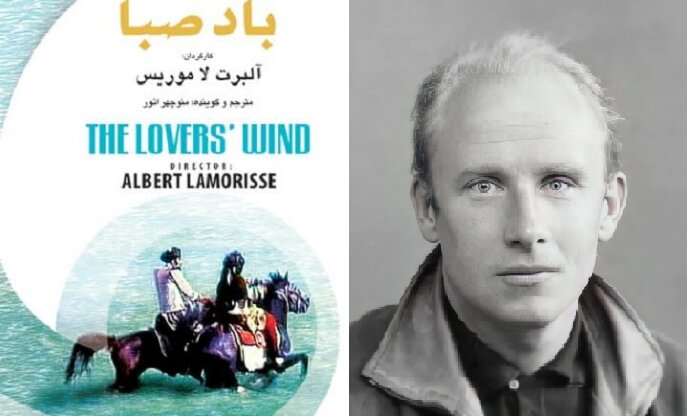House of Cinema to show restored version of Albert Lamorisse’s documentary about Iran

TEHRAN-The cinematheque of House of Cinema in Tehran will screen the restored version of “The Lovers’ Wind,” a documentary directed and produced by the late French filmmaker Albert Lamorisse about Iran, on Monday.
The 1978 movie has been digitally improved with the help of the National Film Archives of Iran. The film screening, part of the “Documentary Nights” program of House of Cinema, will begin at 5 p.m. and will be followed by a review session with the Iranian veteran documentarians Mohammadreza Aslani and Saeed Rashtian in attendance, ILNA reported.
“The Lovers’ Wind” is a dreamlike documentary film that scans Iran’s stunningly variegated landscape of both natural and manmade wonders.
The documentary beautifully depicts landscapes of Iran from an aerial view, showing waters of the Caspian Sea in the north and the Persian Gulf in the south, palm trees in the west, central deserts and eastern meadows, ruins of ancient historical sites like the city of Susa and Persepolis, as well as people in different locations. About 85% of the film was shot from a helicopter. Although it shows real images of the country, there is a fictional (and funny at times) narration by the acclaimed Iranian veteran filmmaker, writer, editor, translator, and voice artist Manouchehr Anvar.
Iranian traditional and ethnic music also accompanies the picture and narration. The composition by Master Hossein Dehlavi, includes several pieces with Persian instruments tar, tonbak, santur, ney, and violin, greatly contributing to each scene.
In Persian, the title of the movie is translated as “Saba Wind” coming from the northwest symbolizing the message of love. The film is lyrically narrated by the voice of the wind.
Born in Tehran, Anvar, 95, graduated from the Royal Academy of Dramatic Art in London and started his artistic career in 1958 after returning to Iran.
Lamorisse (1922-1970) was a French filmmaker, film producer, and writer of short films which he began making in the late 1940s. He also invented the strategic board game Risk in 1957.
In the filmmaking sphere, he invented a steady-camera mounting system for helicopters, called “helivison,” which helped support his lifelong fascination for filming aerial subjects, as well as for filming ground-level subjects from the air.
Thanks to his unique aerial documentary capabilities, Lamorisse was commissioned in 1968 by the Iranian Ministry of Art and Culture to make a film celebrating Iran’s magnificent culture, from ancient times up to the present, that would feature his patented aerial photography.
Lamorisse completed much of the shooting for the film in 1969, most of which (about 85 percent) featured aerial cinematography, in accordance with his own poetic view of what the film should be about. He came back in 1970 to shoot more material featuring modern industrial developments but was killed in a helicopter crash while filming the Karaj (Amir Kabir) Dam 63 km northwest of Tehran.
His widow and son, both of whom had been working as assistants on this film’s production, completed the film, based on his production notes, and released it eight years later in 1978. It was nominated for a posthumous Academy Award for Best Documentary Feature in 1979.
There is also a postscript to the story, in the form of a six-minute film. After the accident at Karaj, Lamorisse’s camera was retrieved from the wreckage, and its film was developed in the lab of the Ministry of Art and Culture. The footage was then edited together by Iranian members of his original crew to create a tribute to the director and a memorial of his death.
As mentioned, “The Lovers’ Wind” pays tribute to Iran by showing the country’s fascinating features from the perspective of the wind. Wind mythology is a feature of all ancient cultures, and winds are variously thought to metaphorically represent disruption, fate, and the forces of change. In the case here, we have a unique wind, Saba Wind, who looks down with fascination on the changing terrain he surveys.
This wind joins other winds to travel around Iran. They visit Isfahan and see wind towers. Then they go to Susa, which represents all cities destroyed by wind and repopulated by nomads, wanderers like the wind. Then it is on to Persepolis, Mashhad, Qom, the unpopulated city deserts, Zoroastrian towers of silence, the Persian Gulf, oil refineries, Mount Damavand, Tehran, Caspian provinces, and the Turkmen area in the northeast of Iran. There are wonderful views of the antelope, onager, wild sheep, and fox.
SS/
Leave a Comment